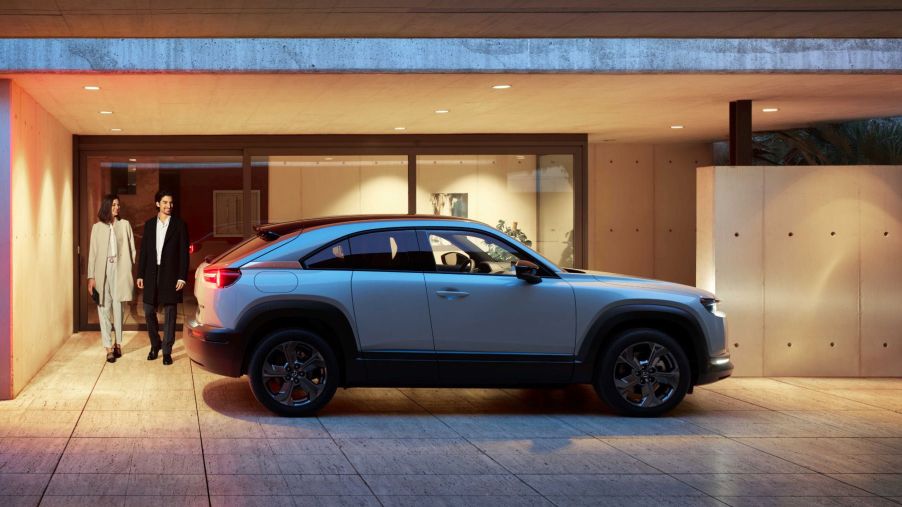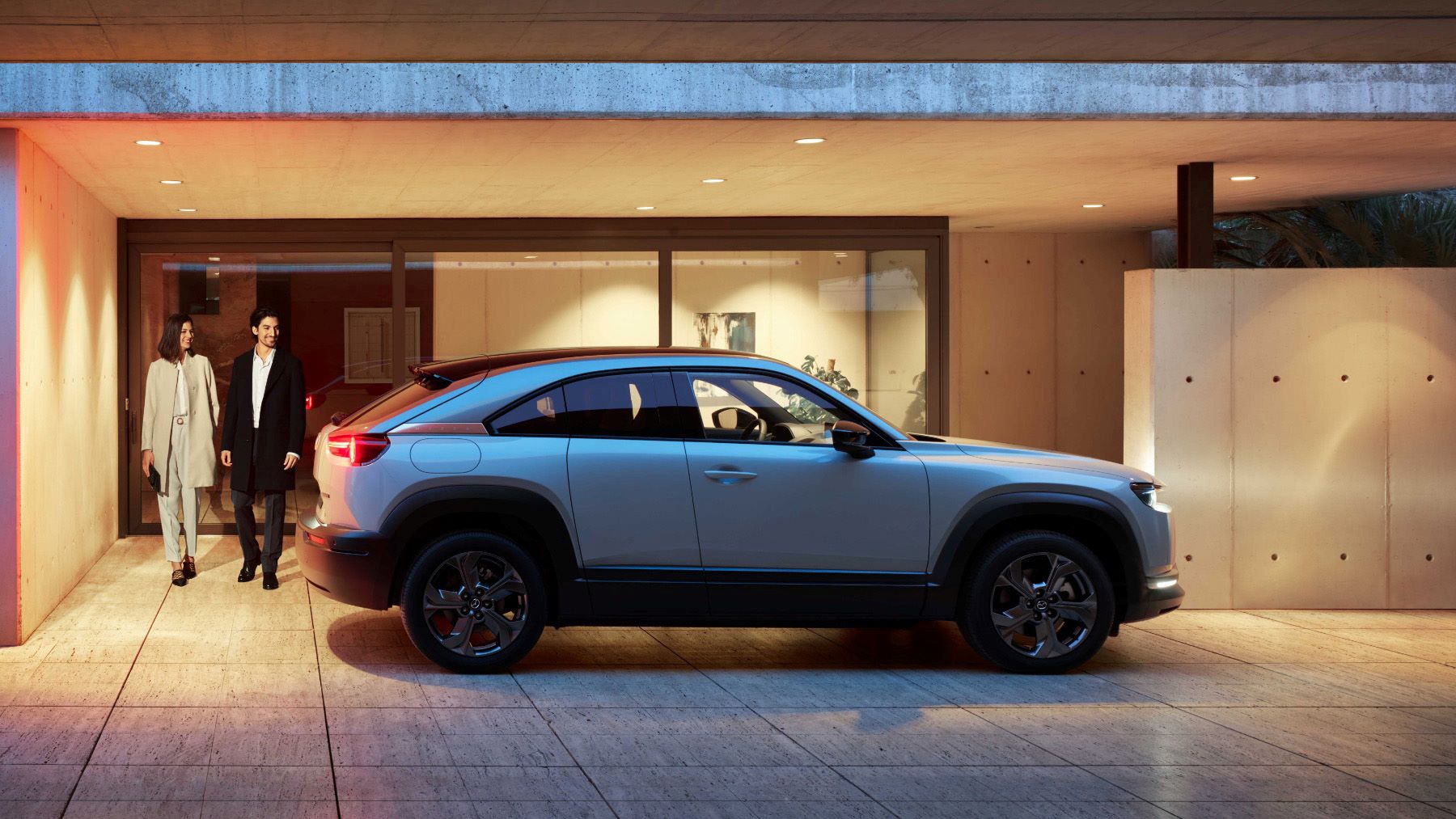
The 2022 Mazda MX-30 Can Now Charge 10 Minutes Faster, Still Has Driving Range of Only 100 Miles
Being the only EV in Mazda’s lineup, the Japanese automaker has tried to get the 2022 Mazda MX-30 right by fixing a major problem in the 2021 model year vehicle: its long charging time. Mazda may have succeeded in shortening it, but that’s not the biggest problem plaguing the electric car for most drivers. It plays second fiddle to the god-awful driving range of only 100 miles.
The improved charging time of the 2022 Mazda MX-30

When the Mazda Mx-30 was first released in 2021, it had a 35.5 kWh battery, one of the smallest EV batteries on the market. This particular battery had a 36-minute charging time at a Level 3 DC station. While this charging speed wasn’t bad, Jalopnik reports that it was unimpressive for a battery that small, thanks to the automaker using outdated charging technology.
For the 2022 model year, Inside Mazda, a U.K. online publication, noted that Mazda added some technical updates. This allowed the vehicle to accept 50 kW of power, up from the previously usable 40 kW. This effectively reduced the charging time to 26 minutes.
Nevertheless, Jalopnik still notes that this is still nowhere near modern standards as an EV like the Kia EV6, which can accept over 200 kW of power for fast charging. If Mazda were to use similar technology with the MX-30, owners wouldn’t have to wait for more than a few minutes for a full charge.
It’s worth mentioning that this 10-minute upgrade is only available for U.K. buyers of the vehicle. After all, Mazda U.S.A. still lists the charging time for the 2022 Mazda MX-30 at 36 minutes.
The electric SUV’s terrible driving range
The Mazda MX-30 offers a dismal 100 miles of all-electric driving range, putting it at the bottom of the pack compared to other EVs. Class leaders like the 2022 Lucid Air and 2022 Tesla Model S Long Range offer upwards of 400 miles of range with a full battery.
The Lucid Air, in particular, offers more than five times the available range in the MX-30. Nevertheless, there are still others that don’t provide much of an improvement over the Mazda.
One example is the 2022 Mini Cooper Electric, which comes with a $29,900 starting price, according to U.S. News. Its electric driving range maxes out at 114 miles. There are also electric sports cars like the almost $100,000 Porsche Taycan Cross Turismo, with a relatively limited range of 215 miles.
It’s also worth noting that Mazda plans to introduce a rotary engine to the MX-30. According to the automaker, its rotary engine is not a new invention, and it was first introduced in 1967. Since then, Mazda has put the engine in various cars, including concepts like the Mazda RX-01, Mazda RX-Vision, and more. However, making an electric rotary engine, or including it to turn the MX-30 into a hybrid model, would extend the range and make the SUV a lot more practical.
The Mazda MX-30’s other problems
Jalopnik also noticed another problem with the Mazda MX-30 in that it’s more cramped than other electric SUVs. In fact, Edmunds lists the Mazda’s EPA interior volume at 110.8 cu. ft. Cargo space is also quite limited for an SUV at only 21 cu. ft. This is pretty uncharacteristic of an electric car as they typically have more space in the cabin than their fuel-powered counterparts.
In comparison, an alternative like the Kia Niro EV offers 115.1 cu. ft. of interior space, resulting in a more comfortable experience. Additionally, an electric SUV like the 2022 Hyundai Ioniq 5 is much bigger and therefore offers even more interior space at 133.7 cu. ft.
Overall, the Mazda’s compact size is beneficial for agility and maneuvering tight spaces. However, this can cost buyers driver and passenger comfort.


